3D-PRINTED SADDLES AND THE SEARCH FOR COMFORT

Are 3D-printed saddles the way to get better comfort for your butt and improved performance from your unique anatomy?
In this review, I’ll try to answer that question.
THE CHALLENGE OF FINDING THE “BEST SADDLE”
One of the most frequent requests I get from fellow enthusiasts who spend hours and hours riding their bikes each week is to review and recommend saddles.
Knowing how different our anatomies, riding profiles, and riding positions are, I’ve never seen how testing saddles could conclude anything more than which one is best for me or someone else doing the testing rather than what saddles are best for a broad group of cyclists like those of you who read or watch my reviews.
Our differences are why there’s a dizzying number and array of saddles available to riders. They vary in shape, length, width, curvature, pad density, cutouts or depressions, shells, and rails.
The best bike shops and fitters don’t recommend just one saddle or let you ride off without hesitation on a new bike with the saddle that came with it. Instead, they analyze and adjust your bike and saddle fit and suggest and allow you to ride several saddles until you find one that fits well and you like riding.
THE POTENTIAL OF 3D-PRINTED SADDLES
Saddles with a pad of polymer material created to a unique specification by a 3D printer hold the potential to deliver a custom-fit bike seat ideally suited to all that is unique about your body and cycling.
However, to cut to the chase, most of the 3D-printed saddles we tested don’t deliver on that potential. Even when they do, such a saddle won’t be the exclusive answer to getting comfort and performance from a bike seat or may even be needed.
But for those of you who have worked on the other pieces of your fit puzzle or tried a range of foam saddles and still aren’t as comfortable as you’d like, the 3D-printed saddles we tested can give you added comfort and, depending on how aggressively you ride, improved performance.
As with so much about cycling gear and kit, it’s up to you to decide whether the benefits of a 3D saddle are worth their added price.
For this review, my fellow testers and I, with our different anatomies and riding profiles, tested a range of 3D-printed saddles. Our goal was to share our experience and tell you whether we think there is value in switching to one of them from the traditional, foam-padded saddles.
If you prefer, you can watch an abbreviated version of this review on YouTube:
ASSEMBLING THE FIT PUZZLE
Before getting into how each 3D-printed saddle delivers against the potential of better comfort, performance, and value, let’s review the other puzzle pieces you need to assemble to evaluate a saddle fairly.
Your saddle is just one part of the fit puzzle that includes your frame geometry and the size and positioning of the seat post, stem, handlebars, crankset, and pedals. Together, they give you the right “stack” height above your bottom bracket and reach to your handlebars for your leg, trunk, and arm lengths, your body’s flexibility, and how upright or stretched out you ride.
Your comfort and performance are also affected by the stiffness of the frame, seat post, and wheelset and by your tire inflation pressure.
You’ll also want bibs with the right chamois shape and pad thickness to optimize your comfort and performance.
Your saddle and cleats need to be positioned knowing the thickness of your shoe soles, height of your pedals, length of your axles, and to account for any lower-body injuries or asymmetries in your hips, legs, or feet.
If you don’t assemble all of these pieces of the fit puzzle with knowledge of each other, it won’t matter how correctly shaped and sized or comfortably padded a 3D-printed or foam-paddle saddle is. You will not likely optimize your comfort and performance on the bike.
Once you have a good, up-to-date fit, you’ll better understand whether or how much improvement you can get from a 3D-printed saddle.
SADDLES AND SITUATIONS
Four of the largest cycling saddle brands and a few upstarts make 3D-printed saddles.
For this review, my fellow testers and I tested two from Fizik that they brand as Adaptive saddles, two from Specialized that they call Mirror, and one from Posedla named the Joyseat.
Because they come in widths narrower than our sit bones, we didn’t test saddles from Selle San Marco and Selle Italia, the two other major brands that make 3D-printed models.
Miles, a regional and US Nationals Masters P/1/2 road, gravel, CX, and MTB racer, has used Fizik Antares saddles on his road, gravel, and CX bikes for about five years.
He replaced the US$175 Fizik Antares R3 saddle on his Giant Propel aero road bike with the US$260 3D-printed Fizik Antares Versus EVO R3 Adaptive saddle. It has a nylon shell and hollow rails and weighs 217 grams in the 139mm size we tested.
Fizik also makes US$300 version of the Antares Adaptive with carbon rails and a US$400 one with both carbon rails and a fully carbon shell, each weighing less.
Nate, who leads the A group rides that average 25mph/40kph in our 300+ member cycling club and finishes on masters podiums on some of the most challenging hill climbs in the Northeast US, rides a US$140 Specialized Power Comp on his Specialized S-Works Venge road bike.
He’s also a regular mountain biker, commutes on a cyclocross bike, and competes on fat bikes during the winter but rides different saddles on each bike he uses for those disciplines.
Nate tested the $400 Fizik Vento Argo 00 Adaptive on his Venge for this review. The 140mm size model tested weighs 180 grams with its carbon shell and rails. Fizik also makes US$260 and US$300 versions, both with nylon shells, the higher priced one with carbon rails.
I’m that stereotypical masters enthusiast who rides about 5,000 miles/8,000 kilometers a year, does three to four B-group road rides each month during the season, and a half dozen 5-hour road or gravel events most years.
I’ve been riding US$250 Specialized Romin EVO Pro and US$140 Specialized Romin EVO Comp saddles on my Parlee Altum Disc road and Giant Revolt gravel bikes and my Specialized Roubaix rim brake road bike that I use most of the time on my trainer.
I tested the US$450 3D-printed Specialized S-Works Romin EVO with Mirror on all three bikes. The 155mm model weighs 198 grams and has a carbon base and rails. Specialized also makes a US$325 model with a nylon shell and titanium rails.
I also tested the custom 3D-printed US$490 Posedla Joyseat on my Parlee. It, too, has a carbon shell and rails. For my sit bone width, the Joyseat weighs 185 grams.
Posedla configured my Joyseat’s dimensions and pad density by using pictures I sent to them of the impression I made or, to be more accurate, the butt print my bottom made from sitting in a box of foam, aka the Smiling Butt Kit that they sent and from my answers to a dozen questions. I told them the type of bike I planned to use the saddle on, my flexibility and riding style, weight and height, hip and thigh circumference, age and gender, and my average and annual ride length.
Our last tester, who I’ll call Dean for reasons I’ll explain later, is a dedicated and strong B group rider and leader. He’s been using the Selle SMP Dynamic saddle that came with the Cannondale Super Six EVO road bike he bought about five years ago.
Over about six months, he tried four 3D-printed saddles: the same Specialized Romin, Fizik Antares, Fizik Vento Argo we also tested and the US$450 Specialized S-Works Power with Mirror, in that order. The top-end Power Mirror has a carbon shell and rails, and weighs 190 grams in the 143mm.
Spech also makes US$325 and US$200 Power Mirror models. The former has a nylon base and titanium rails. I’ll tell you more about the less expensive one later.
Where to find saddles tested for this review
Fizik Antares Adaptive – BTD (BikeTiresDirect), Performance Bike, Merlin Cycles, Sigma Sports, Amazon
Fizik Vento Argo Adaptive – BTD (BikeTiresDirect), Performance Bike, Sigma Sports, Amazon
Specialized Romin Mirror – Performance Bike, Sigma Sports
Specialized Power Mirror – Performance Bike, Sigma Sports
Specialized Phenom Mirror – Performance Bike, Sigma Sports
Posedla Joyseat – Posedla
In The Know Cycling is ad-free, subscription-free, and reader-supported. If you want to help keep it rolling without any added cost to you, buy your gear and kit after clicking the store links on the site. When you do, we may earn an affiliate commission that will help me cover the expenses to create and publish our independent, comprehensive and comparative reviews. Thank you, Steve. Learn more.
Here’s another way to think about what we tested.
Miles and I tested 3D-printed saddles from the same model family of the foam saddles we’ve been riding on all our bikes for years. I also tested one printed specifically for my anatomy and riding profile. Nate tried a saddle from a different brand but with a similar shape and purpose to the one he’d ridden for years. Dean tested four 3D saddles from 2 different brands with different shapes and purposes than the foam one he uses.
Miles, Nate, and I have all been happy with the comfort and performance of our foam saddles. We tested these 3D-printed models to see if we could do better and to understand what this new technology was all about.
Dean tested the 3D-printed saddles in search of one that might alleviate the sit-bone pain he gets on long rides.
Here are the key takeaways from our months of testing.
ADDED COMFORT? YES, BUT
Added comfort is the big selling point for 3D-printed saddles.
Miles, Nate, and I found the 3D-printed saddles we tested provided some added comfort in certain situations.
We noted that the big brand saddles felt differently than our traditional foam ones. Miles called the Antares Adaptive “squishy.” Nate used the term “spongy” to describe the Vento Argo Adaptive. The Romin Mirror seemed “cushy” to me.
While we reached these similar qualitative impressions about the 3D-printed saddles, the amount of give or resistance each offers varies quite a bit in the sit bone area from one to the next and between the sit bone area or “zone” of the saddle and other zones elsewhere on the same model.
For example, in the sit bone zones, the Antares Adaptive and Romin Mirror feel far more cushiony than the Vento Argo Adaptive. The Power Mirror slots somewhere between them.
Miles found the 3D-printed Antares saddle only “slightly more comfortable” on long rides despite being notably less dense under his sit bones. Nate didn’t feel there was “anything transformative about” his riding experience with the Vento Argo.
I began testing the 3D-printed Romin in the winter and immediately noticed its added comfort while riding it on my trainer bike. With this cushier saddle and some good movies, I could now comfortably do 2+ indoor rides when my training plan called for it, not that I really wanted to.
However, I could not get comfortable with the same saddle once I got out on the road despite trying a few different saddle positions after two trips to my long-time bike fitter. Moving the same saddle over to my gravel bike delivered notably better comfort than I’d ever enjoyed with the foam version of the Romin.
The Posedla Joyseat I put on my road bike instead of the Romin foam and Mirror models isn’t squishy, spongy, or cushy. It seems as firm or perhaps more so than the foam Romin models I’ve ridden for years in the sit bone area. Yet the saddle is more comfortable with my bike on the trainer and road than my foam Romin, likely due to all of the customization. The rail zone between the sit bone and nose zones is firmer, while the nose zone is soft.
Dean hasn’t yet found any of the 3D-printed saddles he’s ridden to provide relief to the sit-bone discomfort he feels from his current foam saddle once his ride extends beyond a couple of hours.
POSSIBLE EXPLANATIONS
What might explain our different experiences with the comfort of 3D-printed saddles?
While I think each has the potential to give you added comfort, only the custom-configured Joyseat is made from the jump to do that specifically for you as opposed to a segment of riders like you.
With non-customized 3D-printed saddles, as with foam ones, you have to test several in search of one that best suits your anatomy and all the details of your riding profile. And as Miles and I found, even the same 3D-printed model of the foam saddle that’s worked for us for years can but doesn’t always lead to a big or any comfort improvement in all situations.
At least there are fewer 3D-printed saddles to test, though that may mean you’re less likely to find one that works well.
My bike fitter, who sells models of all the major saddle brands, including the Fizik Adaptive and Specialized Mirror ones we tested, shared his vision for 3D-printed saddles. Someday, he told me, bike shops will have 3D printers in the store or at a nearby service center that can produce custom-made saddles for their customers.
Technology is widely used today to make heat moldable insoles and casts that produce custom footbeds on location. The same goes for 3D motion capture technology that measures a rider’s pedal stroke and enables fitters to adjust or replace cockpit components to optimize a rider’s comfort and performance while minimizing injury.
Bike shops already use sit bone measurement and saddle pressure mapping tools. However, they don’t input the data from these tools to produce custom saddles, which is, after all, a far more sophisticated manufacturing and supply chain process than making custom footbeds.
At best, today’s sit bone measurement tools give an experienced bike fitter valuable information to use when drawing on their experience to recommend saddles for you to try.
Fizik and Specialized have website guides intended to get you closer to trying the right saddle. But while Fizik asks about your riding profile and Specialized asks about your body position and preferred amount of padding, neither do anatomical measurements or pressure mapping.
From these guides, you get suggestions that cover a broader range and level of the company’s saddles than the narrowing I would expect.
For example, the Fizik Saddle Finder asks for your age, the kind of riding you do (choosing between road racing, endurance riding, triathlon, gravel, ebike, and three types of mountain biking), how often and long you ride, where you slot on the racer, enthusiast, and recreational spectrum, and your gender, sit bone width, and flexibility.
While not as complete as Posedla’s, Fizik’s questions get at many of the same things.
When I told the Fizik guide I was a highly flexible 20-something racer who rode as often and as long as the options available, the finder recommended the Antares, Vento Argo, and 3D-printed Vento Argo. Yet, these are quite different saddles serving different anatomies and riding styles.
When I was more honest and characterized myself as a moderately flexible masters enthusiast who doesn’t ride nearly as much as my younger racing self but still has the same sit bone width, the saddle finder suggested I consider two lower spec, lower price versions of the Tempo Aliante and the 3D-printed Vento Argo.
In both cases, it recommended saddles with widths 5 to 10 mm wider than the site bone measurement I entered. That’s probably because they don’t make saddles the same width I entered.
The Specialized saddle guide is even less discriminating for road cyclists. If you are highly flexible and ride in an aero position, it suggests choosing between the Sitero or Power saddles. If you ride at the other end of the flexibility or upright spectrum, it says the Phenom is for you.
However, if you are between those two extremes, as I expect most roadies are, the Specialized guide suggests you pick either the Power, Romin, or Phenom. That’s like telling you to select between 90% of the road saddles they make.
The variation in 3D-printed saddle density at different zones further complicates getting you on the right bike seat. It strikes me as trying to play chess in 3D when 2D chess is already hard enough.
Nate, who I can always trust to be direct, was clear about the bike seat he tested on this point. “It isn’t a 3D-printed saddle specifically designed for my butt,” he said. “Its shape and areas of softer vs. firmer cushioning are just as arbitrary for my ‘best-fit’ as any traditional saddle.”
So when choosing between non-custom 3D-printed saddles or between them and foam saddles, it looks like we’re back to the existing process of riding a series of saddles over time in search of one that feels the best.
Custom 3D-printed saddles like the Posedla Joyseat do show the potential, and for me, did deliver on the ability, to improve my comfort and performance.
FIT STILL MATTERS WITH 3D-PRINTED SADDLES
While seeking more comfort from a saddle, perhaps a 3D-printed one, it’s important not to lose sight of a bike fit’s role when choosing between saddles.
It’s not always as simple as swapping out a foam saddle for a 3D-printed one and putting its height and fore-aft position the same as your current saddle.
While that’s all Nate did when testing the Fizik Vento Argo Adaptive in place of his foam Specialized Power Comp, the rest of us had to make significant saddle position changes.
Miles lowered his seat post about 6-7mm when switching to the 3D-printed Fizik Antares from the foam-padded Antares. It took him three or four rides to settle on that position. Once there, the support and comfort of the 3D model were only slightly better than what he’d enjoyed for years with his foam one.
I lean on my fitter and his Retul motion capture technology to regularly update my fit when I test out new pedals, pedal power meters, and shifters or when I feel I need a fit update. He usually makes minor tweaks, but I leave his fit studio confident I’m dialed in and with one less variable to worry about messing with my evaluation.
When switching from the Romin foam to 3D-printed Romin on my road bike, however, he moved the saddle 2cm higher and 3cm further back after two fit sessions to get me in a position where I was both most comfortable and displaying the right range of pedaling motion.
Despite making those positioning changes, I was never entirely comfortable with the 3D-printed Romin on the road, unlike I later was with the Posdela Joyseat. Positioning the 3D Romin on my gravel bike, however, did give me a far more comfortable ride than with the foam version.
DEAN’S FIT STORY
And then there’s Dean, whose real name I’m not using to prevent fit-shaming him, and the risk that he will no longer pull me back to the group after I fall off of it once I tell his story.
He’s spent the season going from one 3D-printed saddle to the next, spending about a month or so on each before giving it a thumbs down and moving on. In each case, his sit bones hurt after a few hours in the saddle.
Like Nate, Dean duplicated the height, fore/aft, and nose angle of each 3D-printed saddle in the same position as his foam saddle, which was also uncomfortable on longer rides.
When he began testing his first 3D saddle, the Romin Mirror saddle, which wasn’t working for him, I suggested he go to a fitter to check it out. Business travel during that period made it hard for him to schedule time to do so. He moved on to the Fizik Antares Adaptive, but that saddle’s rails and his bike’s seatpost clamp didn’t play nicely together, so he could never ride it.
Dean next mounted the Fizik Vento Argo Adaptive. After a few weeks of not getting added comfort on long rides from it, he went to a respected fitter to check the saddle position. The fitter told him the position looked fine.
He next moved on to the Specialized S-Wprls Power Mirror, his fourth attempt to find a 3D-printed saddle with the right cushioning to relieve his saddle pain. His initial feedback wasn’t encouraging.
As I write this review, Dean and I are doing an 8-week pedal stroke class to learn how to use our glutes to deliver more power. Let’s hope it only takes eight weeks!
At the first class, the instructor, a collegiate-level cycling coach, and long-tenured bike fitter, noted a pronounced asymmetry in Dean’s pedal stroke. After a bike fit later that week, Coach repositioned Dean’s saddle and the cleat on one of his shoes.
It’s too soon to tell whether the fit and saddle changes will offer the relief Dean hopes for. He’ll likely need to adapt to the new positions and whatever stroke changes he learns from the class. But, without the fit adjustments, it’s unlikely that Dean would ever find comfort on long rides, regardless of which saddle he tries.
IMPROVED COMFORT DOESN’T ALWAYS IMPROVE PERFORMANCE
While I’ve focused on the potential comfort benefits of 3D-printed saddles until now, more comfort should also lead to better performance in two ways.
Theoretically, if you’re more comfortable in the saddle, you can pedal longer without the muscle fatigue or pelvic pain that would reduce your performance.
Additionally, with a saddle better tailored to your anatomy and riding profile, you should be able to pedal more efficiently with the right amount of padding underneath the bony parts of your pelvis and the proper curvature at the saddle edges. Your performance also won’t be limited by having unnecessary padding rubbing against you in the wrong places, for example, against your thighs, perineum for males, or pubic bone arch for females.
Yet, in some of our testing, the exposed 3D-printed lattice on these saddles negatively affected performance.
Miles and Nate, my fastest and most aggressive fellow testers, found the grippy surface prevented them from gliding or sliding their position on the saddle during a ride. Instead, they had to be more deliberate and less natural by getting up off the saddle or sitting up before moving.
Racers and enthusiasts who ride aggressively move their body weight to optimize their power during climbs, their aero performance going downhill, and their control in corners.
And, while a grippier surface requires you to move to a different position on the saddle less quickly and efficiently, a 3D-printed saddle with significantly different resistance zones can further disorient you once you get to that new position.
The Specialized product manager I spoke with said that riders he’s talked to get used to the 3D-printed surface. He also noted that half of the riders on one of their World Tour teams use these saddles.
A Posedla representative told me that, while they feel the Joyseat isn’t as sticky as those from the major brands (to me, they seem similar), they believe the level of grip on their Joyseat is important to prevent riders from sliding too much the way riders do on some covered saddles.
Specialized seems to account for this issue with a recently introduced 3D-printed hybrid saddle, the Power Expert with Mirror. It uses a cover over its combination 3D-printed pad in the sit bone zone and foam padding elsewhere.
However, the company’s stated purpose for the cover is to “keep mud and debris out of the nooks and crannies” of the 3D lattice. And, the “hammock effect” they say they’ve created in the sit bone area seems contrary to the more consistent pressure an aggressive rider would want as they move around the saddle.
Endurance riders and non-racing enthusiasts don’t typically move our position in the saddle much or frequently; if we do, it’s probably because we aren’t comfortable and are looking to relieve the pressure on our sit bones more than to ride more aggressively. A hammock sounds like something we’d never want to get out of except for a drink and a pastry at a café.
While I never consciously move around on my road bike, I likely move enough to have been less comfortable in the cushier Romin Mirror than the firmer Posedla Joyseat.

My butt prefers the firmer, more consistent pressure of the Joyseat (left) on the road and the cushier give of the Romin on gravel
When riding my gravel bike, I’ll deliberately get out of the saddle to move my weight back when I go downhill or to lean my bike into a corner while keeping my weight out over the outside pedal. That’s likely why the more forgiving 3D-printed Romin is comfortable riding over, the rougher surfaces on my gravel bike, as I don’t move forward or back with my weight still on the saddle.
POSEDLA JOYSEAT – THE BEST OF MOST WORLDS
Posedla’s Joyseat gave me the custom shape, dimensions, and pad cushioning level that suits me, a rider who doesn’t change how I move on the saddle very much. It worked well for the moderately flexible, active, but not too aggressive, enthusiast riding profile I described earlier.
There’s the extra step of making a butt print and uploading photos of it to their configurator. It’s pretty straightforward: you do it at home and get confirmation of whether it all worked before they start making your saddle.
You pay upfront and you receive the kit to start the process a few days later. After you submit the photos of your imprint, it takes about 6 weeks to get your Joyseat. You also still need to, or at least, I think you should get a fitter to position it on your bike.
If you aren’t happy with the saddle, Posedla has a 30-day return policy under which they’ll refund the charge for the saddle to you minus US$100, £80, €60 for the cost of the butt print kit.
Note, while they sent me a saddle for this review, as did Fizik and Specialized, I have no commercial relationship with Posedla and am not compensated for this review or if you buy a Joyseat from them.
DO YOU NEED ONE?
As I mentioned earlier, Miles, Nate, and I were happy with our existing foam saddles before we started testing 3D-printed ones. Only Dean was looking for a saddle that gave him more comfort on long rides. A 3D-printed saddle ultimately may solve his discomfort on long rides, but he first needed a better fit to find out.
Cost aside, Nate and Miles would not choose to ride the 3D-printed saddles they tested over their foam-padded ones, principally because of the way the grippy surface of the saddle limited their movement.
If the surface could be smooth, Miles told me he might pay $200 for the Antares Adaptive he tested to put on his race bike or, more likely, to use on an endurance bike for 100+ mile rides.
If the Vento Argo Adaptive Nate tested had a smoother surface, came in a width closer to his needs, and was lighter, he felt US$400 wouldn’t be an unreasonable amount for someone to pay if it provided a rider a great deal more comfort. As I reported earlier, it wasn’t smooth enough or added much comfort for him, and he wouldn’t buy the model he tested.
He also felt strongly that 3D-printed saddles made with anything less than a personalized/customized process were more for riders interested primarily in riding the latest tech.
Dean told me he would spend almost anything for a more comfortable saddle. The potential that one with a 3D-printed pad could offer him sit bone zone relief has led him on his current journey.
While I was happy with my foam-padded Romin on my road, gravel, and, for all but the longest rides, my trainer bikes, I’m happier with the Romin Mirror on my gravel and the Posedla Joyseat on my road and trainer bikes now.
I don’t think the improvement is so significant that I would pay more than twice the price it would cost me if I had to replace one of my Romins. I certainly wouldn’t go out and buy one if my saddle didn’t need replacing.
But, if you haven’t found a standard cycling saddle that gives you the fit and comfort you need or want, the custom-configured Posedla Joyseat is the best 3D-printed saddle we’ve tested. It may just be worth it to you.
While still a good deal more than foam saddles, the non-customized 3D-printed saddles from Fizik and Specialized cost slightly less than the Joyseat and are available almost immediately from online stores or your local bike shop. If you test several and find one that gives you better markedly better comfort and performance for your anatomy and the type of riding you do, that could be a relatively good value.
In the comments below, let me know what you’re looking for from a saddle and whether you’ve tried a 3D-printed one. If not, I’d be curious to know why you would or wouldn’t consider testing one. These products are still part of an emerging technology, and your feedback can help fellow cyclists decide what they might do. It also might help saddle makers improve their products in ways that will benefit more of us.
* * * * *
If you’ve enjoyed or benefited from this review and want to keep new ones coming, buy your gear and kit after clicking the store links above and others across the site. When you do, we may earn an affiliate commission that will help me cover the expenses to create and publish more ad-free, subscription-free, and reader-supported reviews that are independent, comprehensive, and comparative.
If you prefer to buy at other stores, you can still support the site by contributing here or when you purchase anything using these links to eBay and Amazon.
You can use the popup form or the one at the bottom of the sidebar to get notified when new posts come out. To see what gear and kit we’re testing or have just reviewed, follow us by clicking the icons below.
Thanks, and enjoy your rides safely! Cheers, Steve
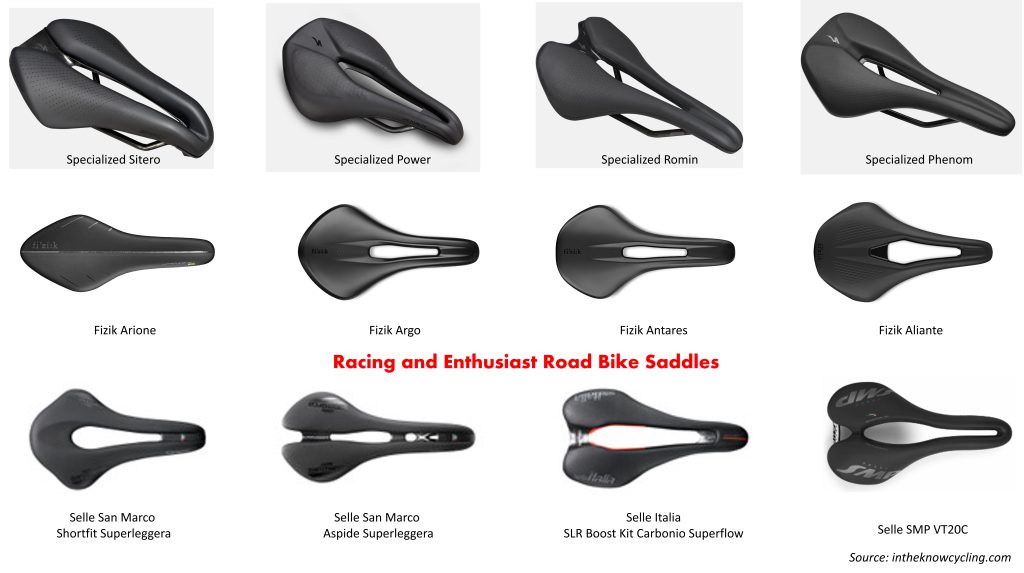
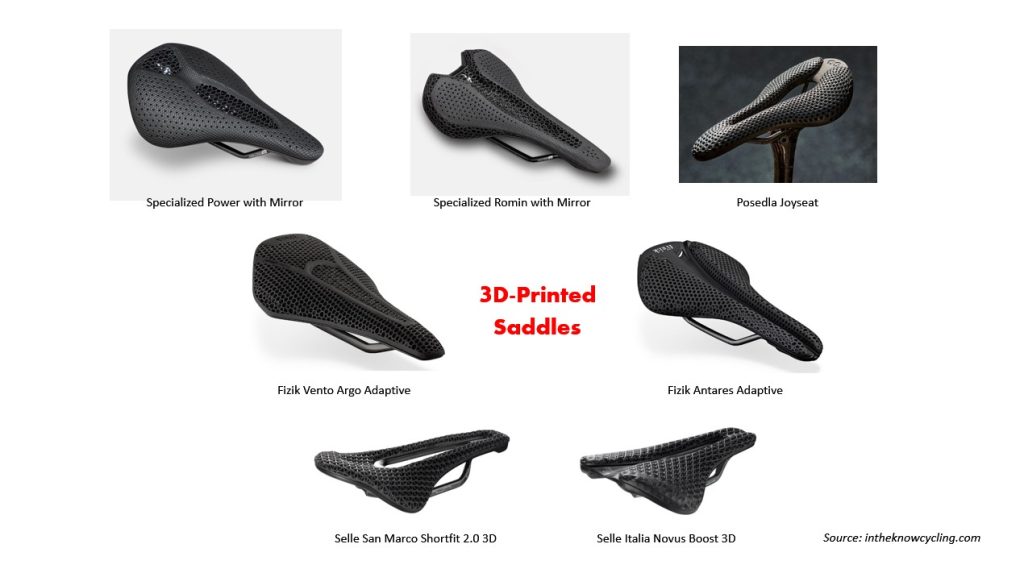
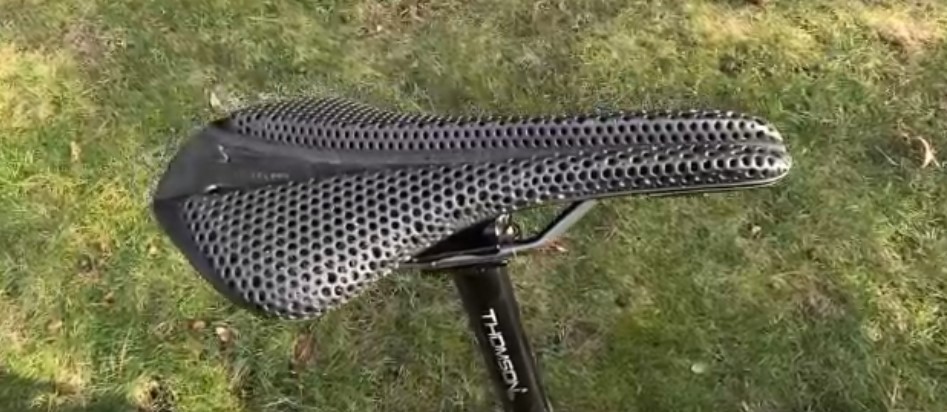
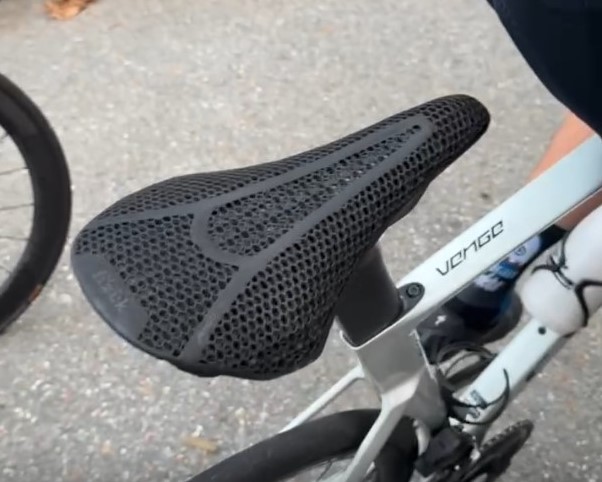
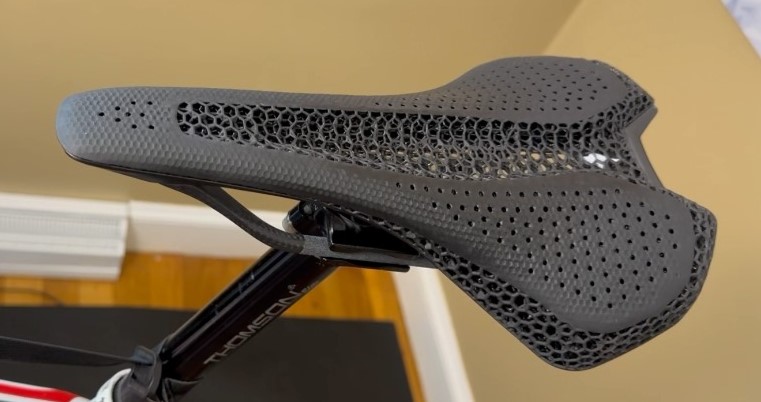
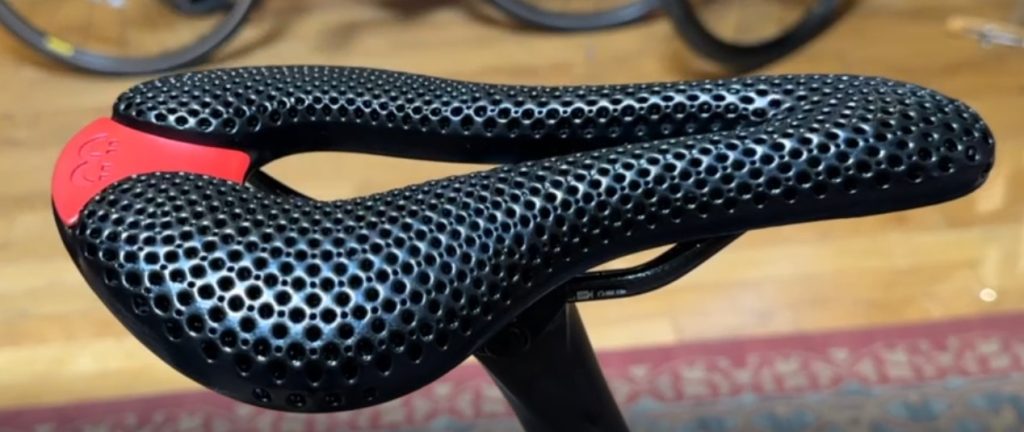
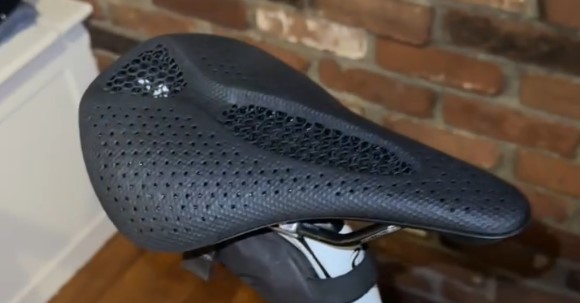
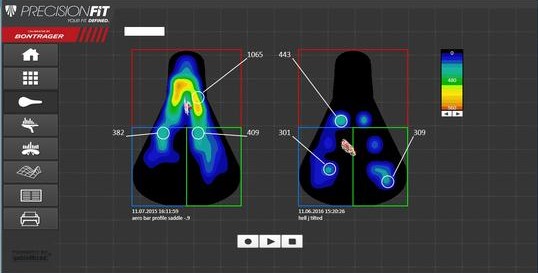
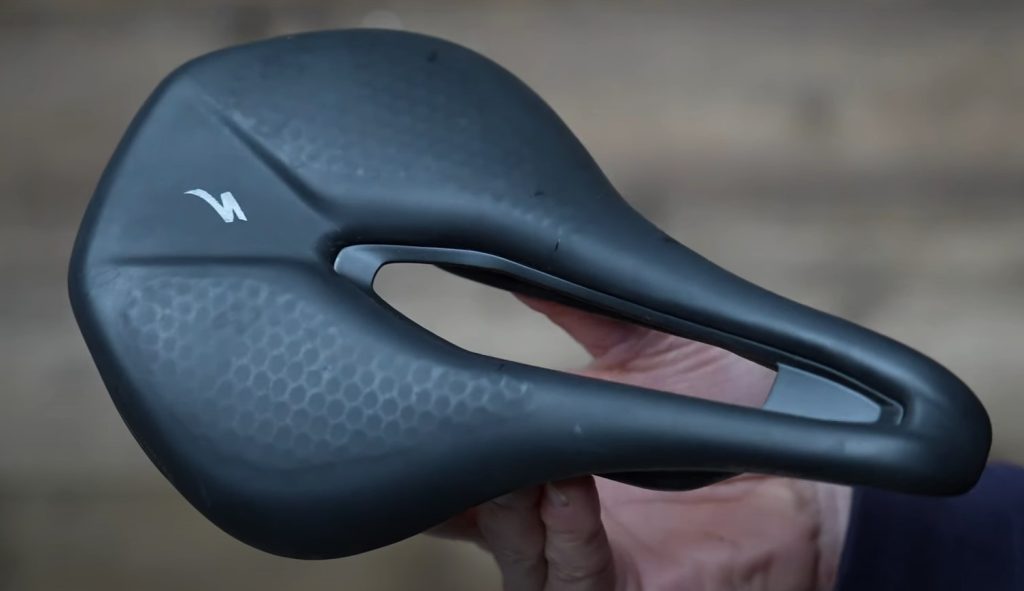
Great info, thanks!
Hi,
So I had prevoously tried Specialized saddles (Romin and then two power saddles (one with titanium and one with carbon rails). Each time I found the comfort levels OK but not great. Especially on the rubish roads and 4h+ rides I prefer.
I then went to the Power 3d saddle which was markedly more confortable for my sitting bones. However I found the narrow version still too wide as it still rubbed the inside of my legs, even after two fits. After watching some youtube videos on fit, I decided to try the Selle Italia 3d printed saddle and I quite happy with it. It’s fairly firm but not overly so and I have no more irritation on the inside of my legs 🙂
Hi. Thanks for this review. It would be interesting to have you comparison between the Posedla and Reform customizable saddle if you get the chance to test one…
I picked up a Specialized Power Pro Mirror because I was having excruciating pain in my sit bones on my home trainer rides, something I had never had before and seemed to be getting worse. I also retooled my bike fit with my LBS fit team at the same time. Over the course of the next 3 months the pain has substantially improved and I’m doing a lot better, but I can’t credit the SPPM entirely because I only have 1 and once I transcribed my fit over to my 2nd bike, my sit bone pain improved on that bike as well…which is to say that the fit might have been the bigger fix than the saddle.
That said, I do like the SPPM and it did a great job on a recent century but I completely echo the findings of your team in that the surface is “sticky” and you have to consciously reset your body when moving on the seat. Especially if you like being able to slip forwards, backwards, etc this is really jarring. Where I notice it the most is when I come up out of the saddle for a surge uphill and then settle back onto the saddle. Your butt sticks EXACTLY where you land, and so if you aren’t right on target, you’ll have to do a little shimmy or lift to reposition and this isn’t exactly smooth. For now I’m sticking with it, but I would actually love if there was a coating of some kind on the surface to make it more slippery…Teflon anyone?